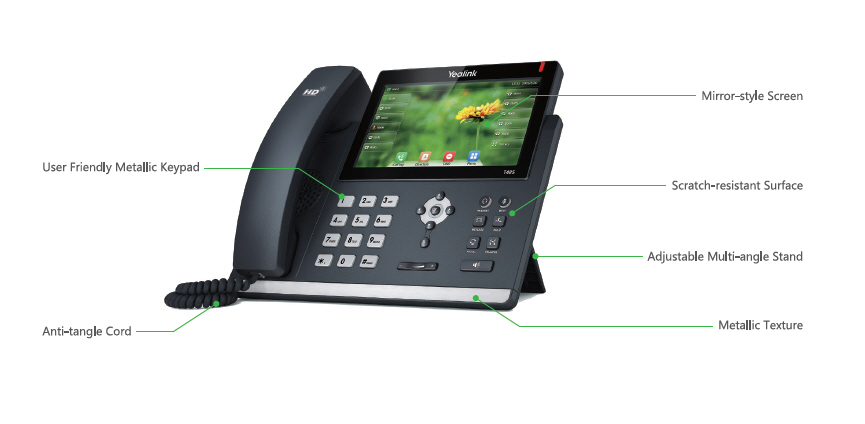Introduction
In today’s fast-paced business environment, efficient communication stands as a cornerstone of operational success. With the growing adoption of Voice over Internet Protocol (VoIP) systems, particularly SIP-trunked VoIP, organizations are now able to enjoy cost-effective and scalable solutions for their telecommunication needs. However, with this convenience comes the necessity to ensure that these systems function optimally. This is where Key Performance Indicators (KPIs) come into play. By monitoring specific KPIs, businesses can glean insights into their VoIP phone system's performance, identify issues proactively, and enhance overall service quality.
This article delves deep into the key performance indicators that are essential for monitoring SIP-trunked VoIP performance. From call quality metrics to network reliability indicators, we will explore various aspects that contribute to a seamless communication experience.
Key Performance Indicators (KPIs) for Monitoring Your SIP-Trunked VoIP Performance
When it comes to managing your SIP-trunked VoIP performance, understanding which KPIs matter most is crucial. These indicators not only help in diagnosing issues promptly but also assist in making informed decisions about infrastructure investments and improvements.

1. Call Quality Metrics
1.1 Mean Opinion Score (MOS)
The Mean Opinion Score is a subjective measure used widely to evaluate the quality of voice calls over IP networks. Ranging from 1 (bad) to 5 (excellent), MOS allows businesses to gauge user satisfaction effectively.
Why is MOS Important?
- It provides a straightforward way of assessing call quality. Helps in determining whether the current VoIP phone system meets user expectations.
1.2 Packet Loss Rate
Packet loss occurs when data packets traveling across a network fail to reach their destination. In VoIP systems, even minimal packet loss can result in call degradation or dropped calls.
How Much Packet Loss is Acceptable?
- Ideally, packet loss should be kept below 1% for acceptable call quality. Above 5% often leads to noticeable issues like choppy audio and delays.
2. Network Latency
2.1 Definition of Latency in VoIP
Latency refers to the time it takes for data packets to travel from source to destination. High latency can severely impact the usability of a VoIP phone system.
What’s Considered Optimal Latency?
- A round-trip latency of under 150 milliseconds is generally considered optimal. Beyond this threshold can lead to frustrating delays during conversations.
3. Jitter Metrics
3.1 Understanding Jitter
Jitter measures the variability in packet arrival times and is critical for maintaining consistent call quality in VoIP communications.
How Can You Control Jitter?
- Utilizing Quality of Service (QoS) settings helps prioritize voice traffic. Regular monitoring can identify jitter spikes before they affect users.
4. Call Completion Rate
4.1 What is Call Completion Rate?
This KPI represents the percentage of successfully established calls relative to all attempted calls within a specified period.
Why Monitor Call Completion Rate?
- A low rate may indicate issues with trunk capacity or routing problems. Monitoring helps ensure that your VoIP phone system scales with business growth.
5. Average Call Duration
5.1 Significance of Average Call Duration
Average call duration provides insights into customer interaction patterns and effectiveness of communication strategies.
How Can This KPI Influence Business Decisions?
- Short average durations may suggest quick resolutions or potential issues with service quality. Long durations could indicate complex customer queries requiring more attention.
6. System Uptime Percentage
6.1 Importance of Uptime in VoIP Systems
System uptime refers to the percentage of time that the VoIP service is operational without interruptions or outages.
What Constitutes Good Uptime?
- A target uptime percentage should be around 99% or higher. Downtime can lead directly to lost revenue and customer dissatisfaction.
7. Cost Per Call Metric
7.1 Evaluating Cost Efficiency through Cost Per Call
This KPI calculates the total cost incurred for each completed call, including factors like bandwidth usage and maintenance expenses associated with your VoIP phone system.
Why Track This Metric?
- Understanding cost per call helps identify areas where savings can be made. It allows businesses to assess whether their current provider offers competitive rates based on usage patterns.
8. User Satisfaction Ratings
8.1 Gathering Feedback on User Experience
Collecting feedback from users about their experiences with your VoIP services offers valuable insights into potential areas for improvement.
How Can Businesses Leverage User Feedback?
- Regular surveys can help gauge satisfaction levels and pinpoint specific issues. Analyzing trends over time enables proactive adjustments before dissatisfaction grows widespread.
9. Error Rates in Calls
9.1 Analyzing Error Rates for Quality Assurance
Error rates reflect problems encountered during calls, such as echoes or distortion due to technical glitches within the network infrastructure or equipment failures related to your VoIP phone systems.
What Should Be Done About High Error Rates?
- Conducting systematic troubleshooting can help identify root causes quickly. Upgrading hardware or optimizing network settings may be necessary based on findings from error analysis reports.
10. Number of Concurrent Calls Supported
10.1 Evaluating Capacity Needs based on Concurrent Calls Supported
This KPI indicates how many simultaneous calls your SIP trunking setup can handle without compromising quality or reliability — an essential metric especially during peak usage times!
Why Is This Critical for Businesses?
- Knowing maximum capacity aids planning for growth while avoiding service disruptions during high-demand periods.
FAQs
What are Key Performance Indicators (KPIs)?
Key Performance Indicators (KPIs) are measurable values that demonstrate how effectively a company is achieving its key business objectives—particularly important in assessing performance against set goals in various areas including telecommunications like SIP-trunked VoIP systems.

How do I monitor my SIP-trunked VoIP performance effectively?
Utilize dedicated monitoring tools focusing on essential KPIs like MOS scores, packet loss rates, latency measurements, and error rates among others—this will provide comprehensive insights into performance levels over time!
Why is measuring call quality so important for my business's success?
Call quality directly influences user experience; poor-quality calls can lead customers away from using your services while satisfied users promote customer loyalty—therefore ensuring high-quality communications remains fundamental!
What tools are available for monitoring SIP-trunked VoIP performance?
Various tools exist including cloud-based analytics platforms designed explicitly for tracking telecommunication metrics alongside traditional network monitoring tools capable of measuring latencies/jitters/errors efficiently!

How does packet loss impact my overall communications strategy?
Packet loss affects clarity during conversations; even small losses cause noticeable drops resulting ultimately in frustrated customers—monitoring packets diligently ensures smooth interactions across teams/clients alike!
What steps should I take if I notice high latency affecting my calls?
Address any underlying network congestion by rerouting traffic via https://dantezaes.bloggersdelight.dk/2024/12/18/navigating-compliance-issues-with-your-voip-phone-system/ QoS protocols; additionally consider hardware upgrades if sustained latencies persist despite initial fixes—a proactive approach ensures long-term solution implementations maintain seamless connectivity!
Conclusion
Monitoring Key Performance Indicators (KPIs) for Your SIP-Trunked VoIP Performance isn't merely an option but rather a necessity in today's competitive landscape where efficient communication translates directly into business success! From evaluating call quality through metrics like MOS scores down through analyzing user satisfaction ratings—all aspects contribute toward ensuring optimal functionality within your chosen technology stack! By keeping an eye on these KPIs consistently while being open-minded toward future adjustments—you'll cultivate an environment primed toward maximizing efficiency & enhancing overall profitability!
In conclusion: embrace continuous assessment as part-and-parcel strategy moving forward; it pays dividends ensuring telecommunications remain robustly supported by reliable data-driven insights at every step along way!